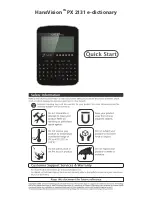
4 Mind State Management
amplifier called an electroencephalograph or EEG, which detects and records the
changes in the voltage emanating from the brain. These electrical patterns tend to
be similar in their general rhythm or rate of pulsation, and can be placed along the
consciousness continuum.
The first pattern is described as
beta waves
, of short amplitude and very rapid pul-
sations of 30-14 cycles per second (Hertz or Hz). This pattern is optimal for intense
mental activities such as calculations, linear logical analyses, and other highly struc-
tured functions.
The second pattern is described as
alpha waves
, characterized by a slightly larger
amplitude of 13-9 Hz. This pattern typically occurs in daydreaming, relaxed aware-
ness, guided or focused imagery and smoothly rhythmic athletic activity. There is
often a euphoric, effortless feeling of “flow” as the doer is absorbed in activity, and
subject and object are felt to be united.
The third pattern is described as
theta waves
, pulsations that are more ragged and
irregular, in the 8-4 Hz range. While this range is rather small, a difference of 1 or 2
Hz in this zone is very noticeable, as it is proportionately much larger than it would
be in the beta or alpha range. This pattern is associated with deep unconscious imag-
ery, and thus creativity, as the person drops into a state of drowsiness and near-sleep.
The last main pattern is that of delta waves, pulsations that range between 3–1 Hz.
In this range of profound relaxation, images and dreams have largely subsided, as
the person slides into a state of slow wave restorative sleep. Meditators who remain
aware during this state of near unconsciousness report tranquility and peace.
In this next section the intent is not merely to present a history of neurotechnology
(the field of mind-machine interface), for others have done a more thorough job
of documenting that history (Hutchison, 1986, 1990, 1992; Budzynski, 1991). My
intent is to put mind state management in a context that allows you to see the rich
human tradition from which it springs, and the way these independent sources form
interdependent streams of consciousness. You can get a sense of the expansive direc-
tion in which this energy can flow, not only in your own development, but in the
development of all human consciousness.
Mind State Management in an historical context
Meditation and Prayer:
Throughout history, in virtually every culture and
religion, there has been a tradition of some kind of meditation or chanting prayer.
Prayer is typically used to focus and calm the mind or invoke the blessing of a deity.
Usually the prayer takes about 15-20 minutes. It may involve the repetition of a
simple phrase or series of actions and rhythmic sounds—jumping, swaying, danc-
ing or chanting. The participant continues repeating the action or mantra long past
the point of boredom, until a higher state or spiritual awareness occurs. If distract-
ing thoughts occur, the participant is told not to resist them; let them pass through
the mind and exit by themselves, allowing the mind to return to the mantra. These
Summary of Contents for Mind'sEye
Page 1: ...User s Guide Reference Mind sEye Mental Fitness System TM...
Page 2: ......
Page 3: ...Mind sEye Mental Fitness System User s Guide Reference TM...
Page 8: ......
Page 22: ......
Page 62: ......
Page 63: ......













































